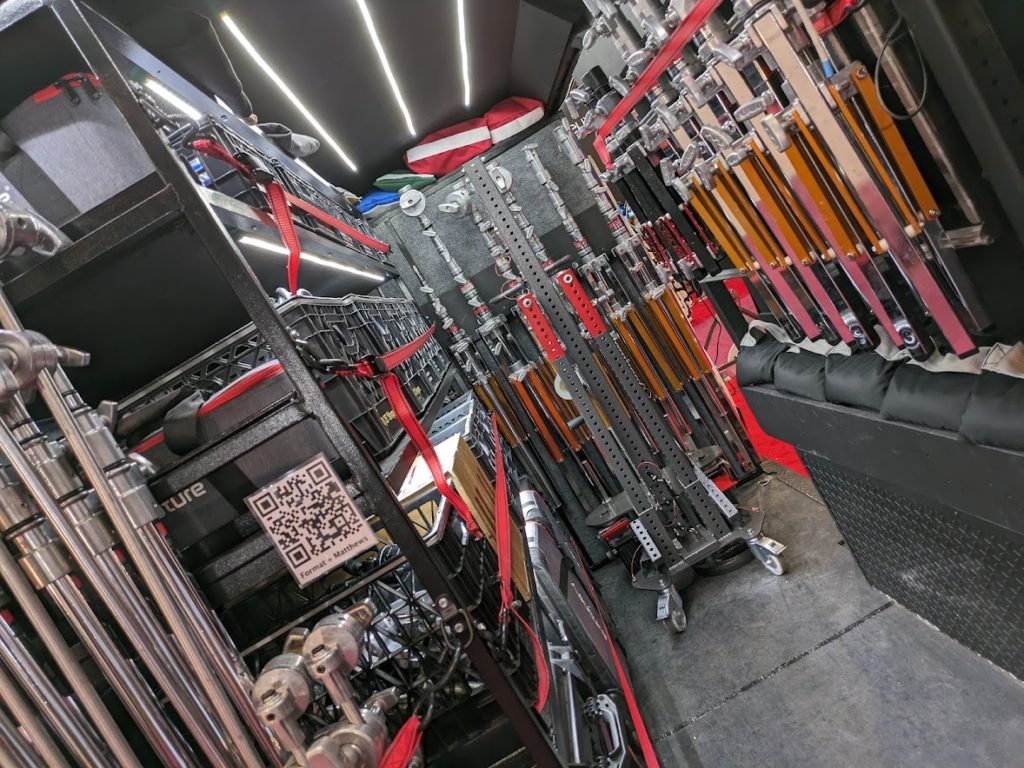
There’s a certain imperative at trade shows to identify trends. It’s perhaps an attempt to sum up an event that takes place across a 2.5 million square foot exhibition centre, involves tens of thousands of people, and covers things of interest to industries as diverse as broadcast infrastructure and tracking rail. Trying to put that into a headline-worthy soundbite is never a smart move, although recent shows have been identifiably heavy on technologies like virtual production, off-premises computing (call it “the cloud”) and artificial intelligence.
Some people like the theme to be about hardware, because hardware sells, but this year we’re going to have to be a bit more figurative. There absolutely was a theme in production gear, and that theme was the rise of the eighty per cent, or ninety-five per cent, or ninety-nine per cent, depending on one’s own personal definition of the phrase “high end”. That’s a phrase borrowed shamelessly from the estimable Andrew Jones of Deity, a company which began by making affordable audio gear and continues to do so, but has added some much higher-end options to its range, as we discovered just yesterday.
By comparison to Deity’s modest beginnings as an offshoot of lighting manufacturer Aputure, its most recent products might seem expensive. The idea, however, is that they seem a lot less expensive in comparison to the things that Deity would like them to compete with, perhaps the likes of – dare we suggest – Wisycom. Similar things have happened over at Aputure, with its large-scale Infinimat softlight and the 2.6kW XT26, about which the company makes no bones regarding its ambitions for big-budget filmmaking.

More power
To an extent, trends like these were always inevitable in the LED lighting market, which was characterised for years by a push toward higher power levels. It was always clear that, once those power levels exceeded the capability of a wall socket in 120-volt jurisdictions, the nature of the market would necessarily change (though people in 240-volt jurisdictions can still be smug about their good fortune). Still, to some extent, going for a higher-end market was not entirely a free choice, neither for Aputure, nor for Nanlux nor Godox nor anyone else with products with power demands which approach or exceed the threshold of American domestic mains power.
This is a consideration of cameras, too. Consider what Blackmagic has done, leapfrogging into the mid-teens price range with its Ursa Cine. Asked directly whether it was going after Arri, the company modestly demurred, but the intent here is fairly clear. This is exactly what some other, now well-positioned camera companies have done in the past, and we don’t even know what Nikon intends to do with Red, yet.
If there’s a downside to all this laudable ambition, it’s the that the market for film and television production hardware is, like many, a pyramid. The higher-end a product becomes, the smaller the number of people who need or can afford it. On a film set, there’s also the small matter of crewing equipment. It’s now shockingly easy for an individual to afford more gear than that one individual can reasonably operate alone. Purchase price hurts once; crew wages hurt every day, especially in the context of a giant overhead rig of the type most likely to support an Infinimat. As technological progress makes more gear available to more people, the reason for ten-minute credit rolls on big movies becomes more and more clear.

Trends analysis
None of these companies are broadcasting any intention to abandon the grass roots, which will likely always represent desirable volume sales of products which are probably easier to manufacture and support than the higher end option. In any case, many of those grassroots products are considerably better specified than the high end of not long ago.
In the end, if NAB 2024 represented anything overall, it was that the gap between the high end and everyone else has narrowed to the point where several companies seem poised to leap across it. Call it democratisation if you like, but it’s hard to complain about a world in which access to quality is less dependent on money, and more dependent than ever on skill. If there’s such a thing as a middle-end, then we’ve apparently found it.

Filmtools
Filmmakers go-to destination for pre-production, production & post production equipment!
Shop Now













